5. Chemistry chemfig LaTeX
See: https://www.overleaf.com/learn/latex/Chemistry_formulae See: https://mirror.aarnet.edu.au/pub/CTAN/macros/generic/chemfig/chemfig-en.pdf
5.1. chemfig

methane
1\documentclass[border = 5mm]{standalone}
2\usepackage{chemfig}
3\renewcommand*\printatom[1]{\ensuremath{\mathsf{#1}}} % This line changes the font of the atoms to sans serif
4\begin{document}
5\chemfig{C(-[2]H)(-[4]H)(-[6]H)-H}
6\end{document}

ethanol
1\documentclass[border = 5mm]{standalone}
2\usepackage{chemfig}
3\begin{document}
4\chemfig{H-C(-[2]H)(-[6]H)-C(-[2]H)(-[6]H)-O-H}
5\end{document}

acetaldehyde
1\documentclass[border = 5mm]{standalone}
2\usepackage{chemfig}
3\renewcommand*\printatom[1]{\ensuremath{\mathsf{#1}}} % This line changes the font of the atoms to sans serif
4\begin{document}
5\chemfig{H-C(-[2]H)(-[6]H)-C(=[1]O)-[7]H}
6\end{document}

ethyne
1\documentclass[border = 5mm]{standalone}
2\usepackage{chemfig}
3\renewcommand*\printatom[1]{\ensuremath{\mathsf{#1}}} % This line changes the font of the atoms to sans serif
4\begin{document}
5% Ethylene
6\chemfig{C(-[4]H)~C(-[8]H)}
7\end{document}
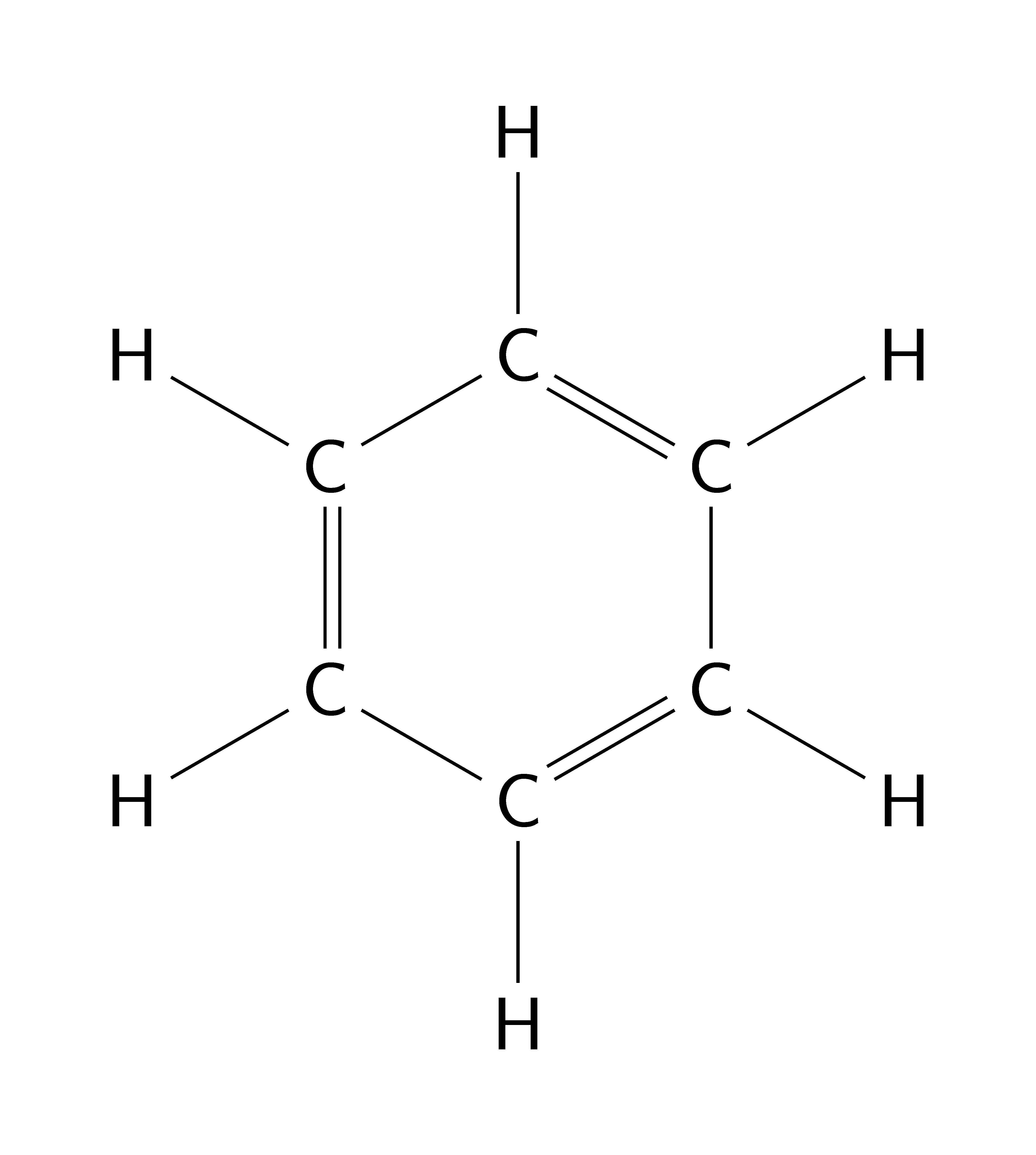
benzene
1\documentclass[border = 5mm]{standalone}
2\usepackage{chemfig}
3\renewcommand*\printatom[1]{\ensuremath{\mathsf{#1}}} % This line changes the font of the atoms to sans serif
4\begin{document}
5\chemfig{C*6((-H)-C(-H)=C(-H)-C(-H)=C(-H)-C(-H)=)}
6\end{document}
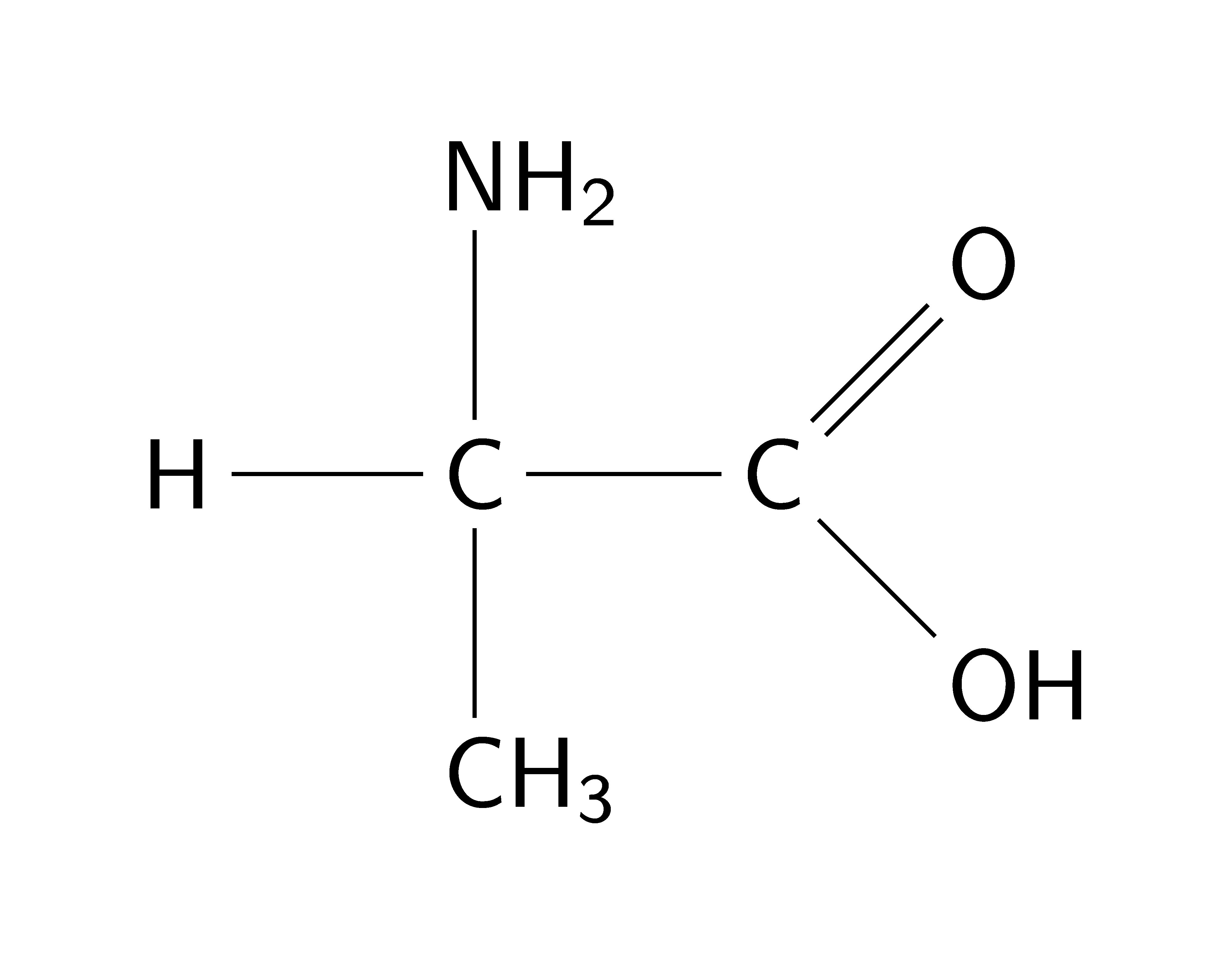
alanine
1\documentclass[border = 5mm]{standalone}
2\usepackage{chemfig}
3\renewcommand*\printatom[1]{\ensuremath{\mathsf{#1}}} % This line changes the font of the atoms to sans serif
4\begin{document}
5\chemfig{H-C(-[2]NH_2)(-[6]CH_3)-C(=[1]O)-[7]OH}
6\end{document}
7
8
5.2. Pentane latex explained
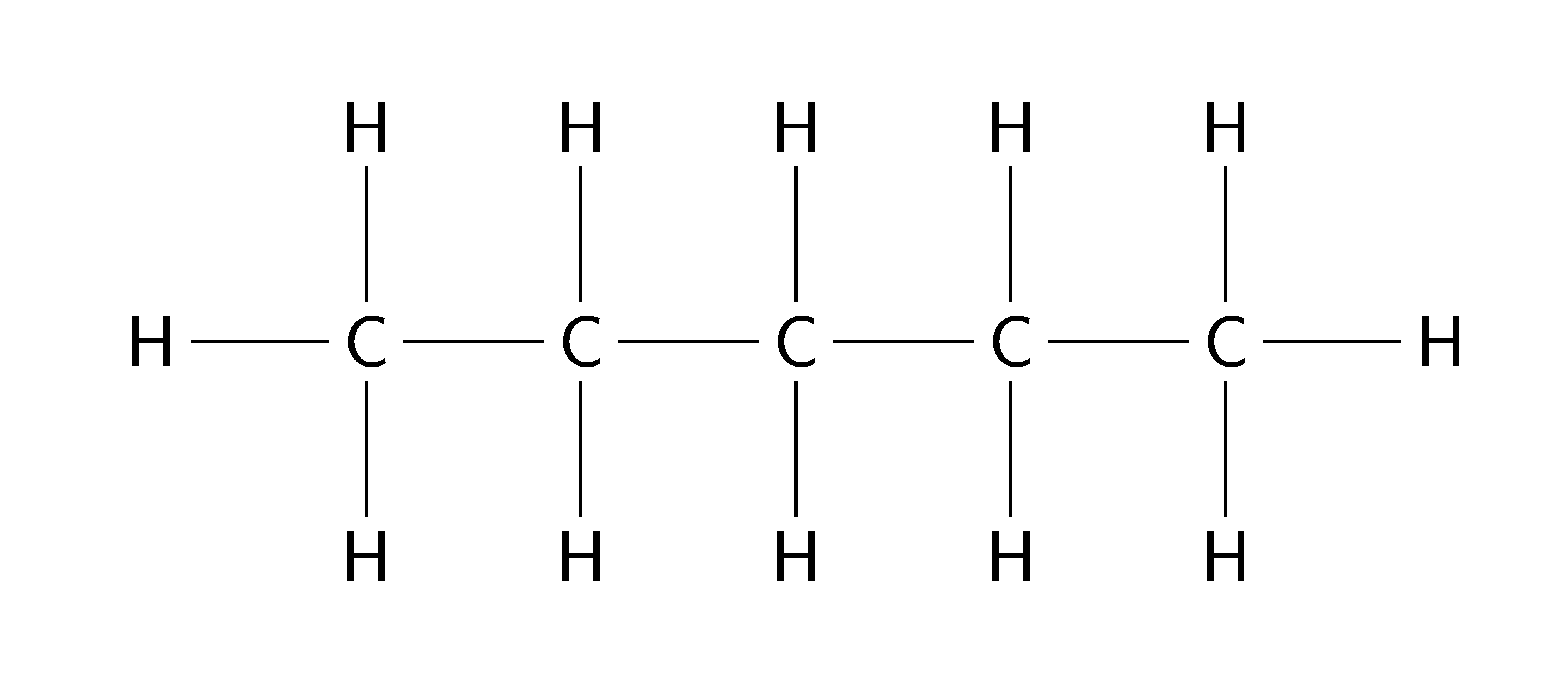
pentane
1\documentclass[border = 5mm]{standalone}
2\usepackage{chemfig}
3\renewcommand*\printatom[1]{\ensuremath{\mathsf{#1}}} % This line changes the font of the atoms to sans serif
4\begin{document}
5\definesubmol{C}{-C(-[2]H)(-[6]H)}
6\chemfig{H!C!C!C!C!C-H}
7\end{document}
documentclass[border = 1mm]{standalone}: This sets the document class to standalone, which means that the output will be a single image file with a border of 1mm. This is useful for creating diagrams or figures that can be inserted into other documents.
usepackage{chemfig}: This loads the chemfig package, which provides commands and tools for drawing chemical structures and reactions.
renewcommand*printatom[1]{ensuremath{mathsf{#1}}}: This line changes the font of the atoms to sans serif
begin{document}: This marks the beginning of the document content.
definesubmol{C}{-C(-[2]H)(-[6]H)}: This defines a sub-molecule named C, which consists of a carbon atom with two hydrogen atoms attached at angles of 2 and 6 (relative to the horizontal axis). This sub-molecule can be reused later in the code to simplify the drawing of larger molecules.
chemfig{H!C!C!C!C!C-H}: This draws a chemical structure using the chemfig syntax. The ! symbol indicates that a sub-molecule is inserted at that position. So this code draws a hexane molecule, which is composed of six carbon atoms (using the sub-molecule C) and two hydrogen atoms at the ends.
end{document}: This marks the end of the document content.
5.3. Chemfig syntax
\chemfig{<atom>-[<angle>,<length>,<side>,<style>]<atom>}
The <angle> parameter is a number that specifies the angle of the bond relative to the horizontal axis. It can be a multiple of 45 degrees (such as 2, 4, 6, 8) or an exact angle in degrees (such as 30, 60, 90). It can also be preceded by a colon (:) to indicate an absolute angle or a double colon (::) to indicate a relative angle. Positive angles are masured clockwise; negative, anticlockwise.
The <length> parameter is a number that specifies the length of the bond as a factor of the default length. For example, 2 means twice as long as the default length, 0.5 means half as long as the default length, etc.
The <side> parameter is either 1 or -1 and specifies which side of the bond the next atom will be drawn. For example, 1 means above the bond and -1 means below the bond.
The <style> parameter is a TikZ code that specifies the style of the bond. For example, dashed, dotted, red, thick, etc.
5.4. Ethylene syntax explained
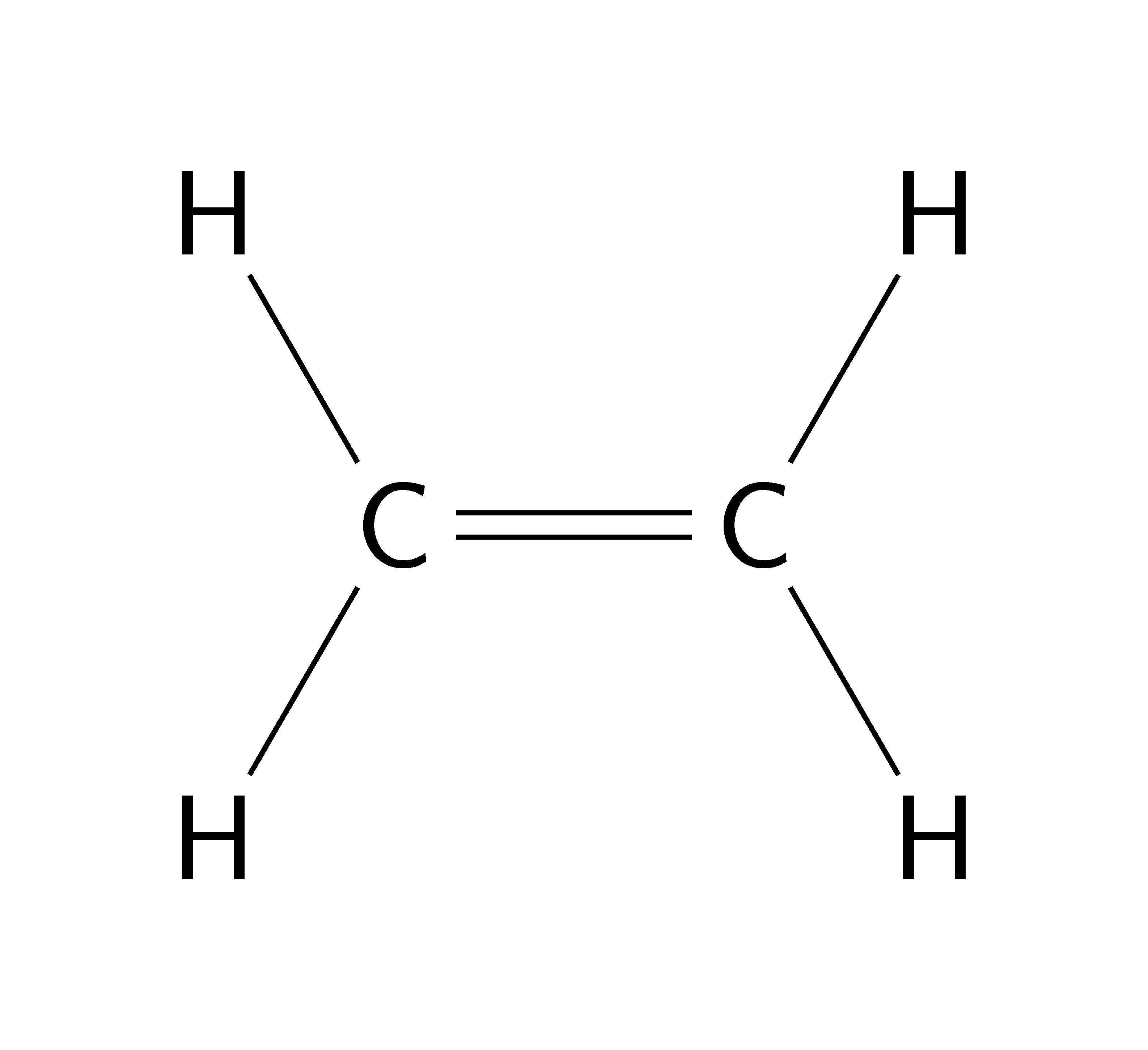
ethene
1\documentclass[border = 5mm]{standalone}
2\usepackage{chemfig}
3\renewcommand*\printatom[1]{\ensuremath{\mathsf{#1}}} % This line changes the font of the atoms to sans serif
4\begin{document}
5% Ethylene with absolute angles
6\chemfig{C(-[:120]H)(-[:240]H)=C(-[:300]H)-[:60]H}
7\end{document}
The chemfig command starts drawing a molecular structure.
The C symbols represent carbon atoms.
The H symbols represent hydrogen atoms.
The (-[:120]H) means that there is a single bond (-) between the carbon atom and the hydrogen atom at an angle of 120 degrees from the horizontal axis. The angle is measured counterclockwise in multiples of 45 degrees, so 120 degrees is equivalent to [2.67] in the optional argument of the bond¹.
Similarly, the (-[:240]H) means that there is a single bond (-) between the carbon atom and the hydrogen atom at an angle of 240 degrees from the horizontal axis, or [5.33] in the optional argument of the bond¹.
The = symbol represents a double bond between two carbon atoms.
The (-[:300]H) means that there is a single bond (-) between the carbon atom and the hydrogen atom at an angle of 300 degrees from the horizontal axis, or [6.67] in the optional argument of the bond¹.
The -[:60]H means that there is a single bond (-) between the carbon atom and the hydrogen atom at an angle of 60 degrees from the horizontal axis, or [1.33] in the optional argument of the bond¹.
5.5. Lewis dot diagram
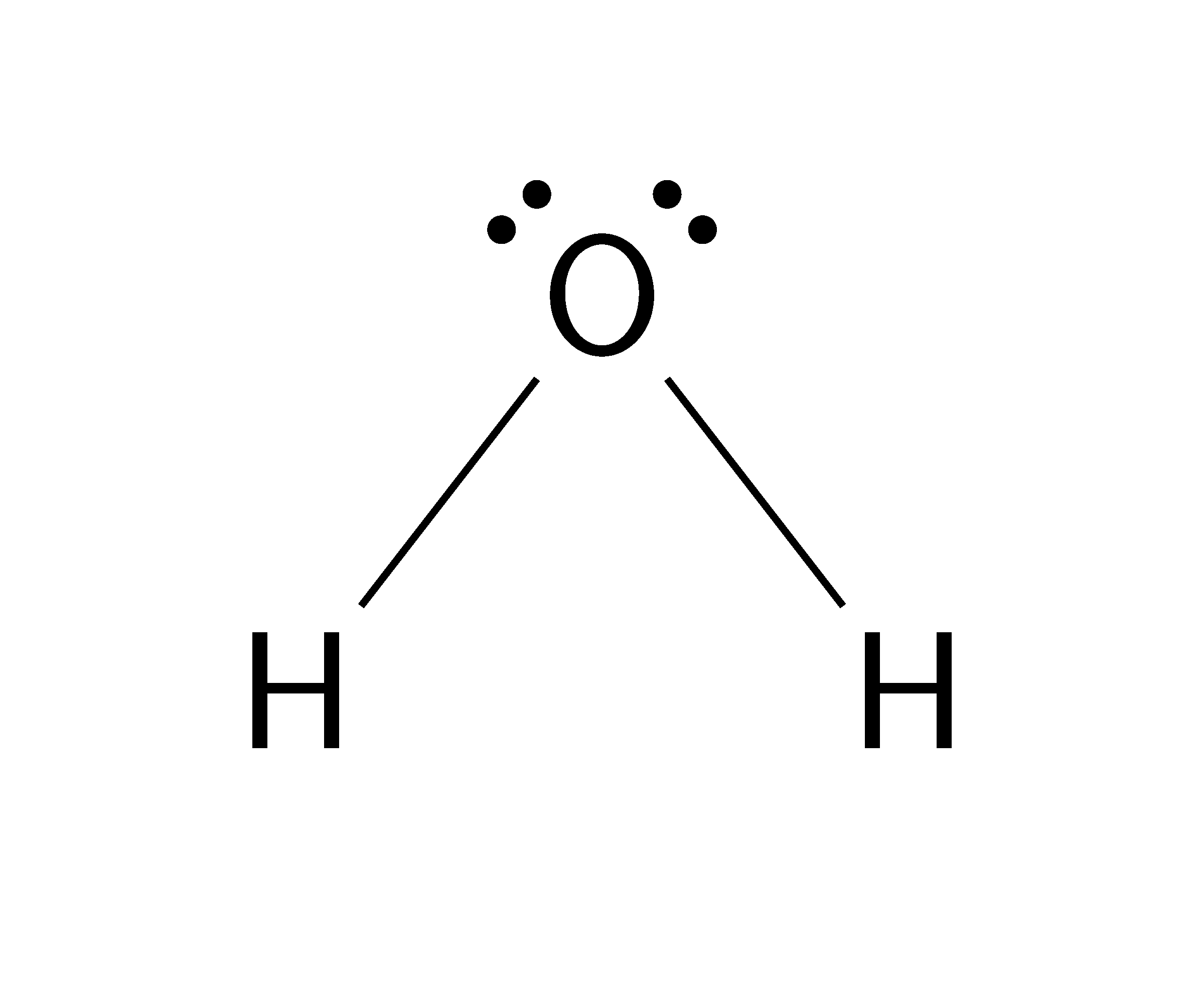
water_lewis
1\documentclass[border = 5mm]{standalone}
2\usepackage{chemfig}
3\renewcommand*\printatom[1]{\ensuremath{\mathsf{#1}}} % This line changes the font of the atoms to sans serif
4\begin{document}
5\chemfig{H-[:52.24]\charge{45=\:,135=\:}{O}-[::-104.48]H}
6\end{document}
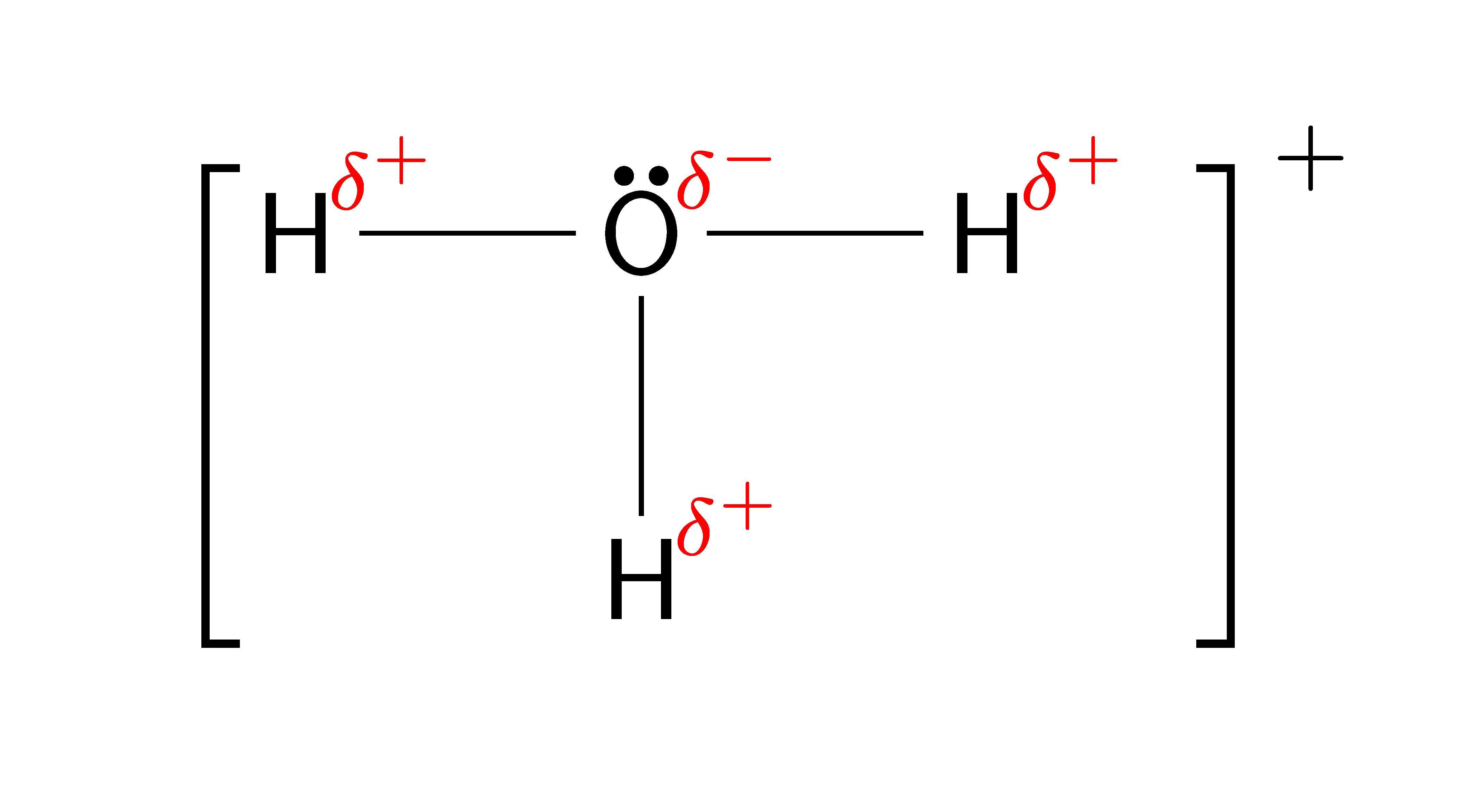
hydronium_lewis
1\documentclass[border = 5mm]{standalone}
2\usepackage{chemfig}
3\renewcommand*\printatom[1]{\ensuremath{\mathsf{#1}}} % This line changes the font of the atoms to sans serif
4\begin{document}
5
6\chemleft[\chemfig{
7\charge{[overlay=true]35:3pt=\color{red}{$\scriptstyle\delta^+$}}{H}
8-\charge{[overlay=true]35:3pt=\color{red}{$\scriptstyle\delta^-$},90=\:}{O}
9(-[6]\charge{[overlay=true]35:3pt=\color{red}{$\scriptstyle\delta^+$}}{H})
10-\charge{[overlay=true]35:3pt=\color{red}{$\scriptstyle\delta^+$}}{H}}
11\quad\chemright]
12\chemmove{\node[] at (0pt,10pt) {\footnotesize $+$};}
13
14\end{document}
5.6. Lewis equation

lewis_equation
1\documentclass[border=5mm]{standalone} \usepackage{chemfig}
2\renewcommand*\printatom[1]{\ensuremath{\mathsf{#1}}}
3\begin{document}
4\setchemfig{atom sep=1.5em, fixed length=true}
5\setcharge{extra sep=3pt}
6\schemestart
7\chemfig{-\charge{90=\:}{N}=C=\charge{90=\:,270=\:}{O}}
8\arrow{<->}
9\chemfig{-\charge{90=\:}{N}=\charge{90=$ ^+ $}{C}-\charge{0=\:,90=\:,270=\:,45=$ \;^- $}{O}}
10\arrow{<->}
11\chemfig{-\charge{90=\:,270=\:,135=$ ^-\; $}{N}-\charge{90=$ ^+ $}{C}=\charge{0=\:,90=\:}{O}}
12\schemestop
13\end{document}
5.7. Molecular equation

molecular_equation
1\documentclass[border=5mm]{standalone}
2\usepackage{chemfig}
3\renewcommand*\printatom[1]{\ensuremath{\mathsf{#1}}}
4\begin{document}
5\chemnameinit{\chemfig{R-C(-[:-30]OH)=[:30]O}}
6\schemestart
7\chemname{\chemfig{R’OH}}{Alcohol}
8\+
9\chemname{\chemfig{R-C(-[:-30]OH)=[:30]O}}{Carboxylic acid}
10\arrow(.mid east--.mid west)
11\chemname{\chemfig{R-C(-[:-30]OR’)=[:30]O}}{Ester}
12\+
13\chemname{\chemfig{H_2O}}{Water}
14\schemestop
15\chemnameinit{}
16\end{document}